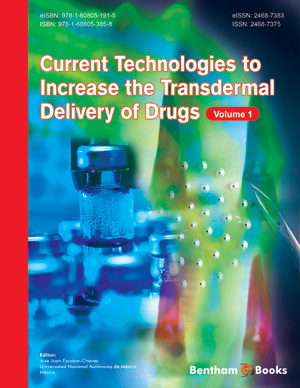Abstract
The skin is the largest organ of the body and its main function is to protect the organism against undesirable effects of the environment. The skin is composed of three different laye rs: epidermis, dermis and hypodermis. The epidermis contains the stratum corneum, the uppermost layer of the epidermis, that acts as the barrier function of the skin due to its very high density and its low hydration. The dermis is an extensive vascular network providing skin nutrition, repair, thermal regulation and immune response. The hypodermis acts as a heat insulator, a shock absorber, and an energy storage region. There are also several appendages in the skin: hair follicles, sebaceous, sweat glands and nails. The skin prope rties play an important role to allow penetration of topically applied drugs or substanc es into the skin. Drug permeation through the skin include the diffusion through the intact epidermis and the skin appendages. In this chapter we reviewed structure, immunological and electrical properties, penetration routes of drugs throughout skin, types of skin and the most common skin disorders that affect humans.






















